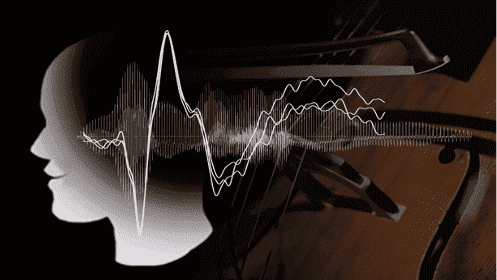
Funding
C.N. has been supported by the German National Academic Foundation (‘Studienstiftung des Deutschen Volkes’) from April 2020 until March 2023.
Project Description
Emotions form an essential part of human experience, and one of the prime channels of emotional expression is the human voice. Humans therefore seem to process vocal emotions effortlessly and automatically. However, the ability to perceive emotions in the voice can vary substantially across individuals, and a part of this interindividual variability has been linked to differences in musicality.
Indeed, consistent evidence suggests that higher levels of musicality are linked to better emotion perception abilities, but the underlying mechanisms are not yet fully understood. In this project, we combined behavioral and electrophysiological approaches with state-of-the-art voice morphing technology to study how people with different musical backgrounds make us of emotional voice cues. To this end, we recruited well-powered samples of professional musicians, non-professional musicians (comprised of separate groups of singers and instrumentalists) and non-musicians.
Our findings suggest that musicians are particularly tuned to the pitch contour (i.e. the melody) of vocal emotions, presumably due to a natural predisposition to exploit melodic patterns rather than a causal training effect. This is also reflected at the brain level, where we found electrophysiological patterns suggesting that musicality affects the manner in which listeners use acoustic voice cues during later, controlled aspects of emotion evaluation.
Publications
Nussbaum, C., Schirmer, A., & Schweinberger, S. R. (2024). Musicality–tuned to the melody of vocal emotions. British Journal of Psychology, 115(2), 206-225. https://doi.org/10.1111/bjop.12684External link
Nussbaum, C., Schirmer, A., & Schweinberger, S. R. (2023). Electrophysiological Correlates of Vocal Emotional Processing in Musicians and Non-Musicians. Brain Sciences, 13(11), 1563. https://doi.org/10.3390/brainsci13111563External link
Nussbaum, C., & Schweinberger, S. R. (2021). Links between musicality and vocal emotion perception. Emotion Review, 13(3), 211-224. https://doi.org/10.1177/17540739211022803External link
Lehnen, J., Schweinberger, S.R., & Nussbaum, C. (2025). Vocal emotion perception and musicality – Insights from EEG decoding. Sensors, 25, 1669. https://doi.org/10.3390/s25061669External link
Nussbaum, C. (2023). Vocal emotions on the brain: the role of acoustic parameters and musicality (Doctoral dissertation).

-
Annett Schirmer
Institute of Psychology, University of Innsbruck, Innsbruck, Austria, Annett.Schirmer@uibk.ac.at
-
Johannes Lehnen
Department for Clinical Psychology in Childhood and Adolescence, FSU Jena, johannes.lehnen@uni-jena.de
-
Jessica Dethloff
Department for General Psychology and Cognitive Neuroscience, FSU Jena, jessica.senftleben@gmail.com
-
Stefan R. Schweinberger
Department for General Psychology and Cognitive Neuroscience, FSU Jena, stefan.schweinberger@uni-jena.de